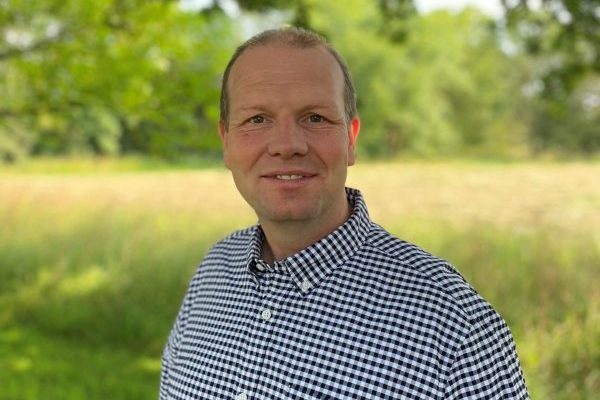 As we move into spring, annual discussions and decisions are being made about drill timing, weather patterns and necessary inputs to meet crop needs. Can we hold off drilling for the early flush of spring weeds and allow for the soil to warm up? Or will it be a hot and dry spring, meaning the moisture will fast be lost?
As we move into spring, annual discussions and decisions are being made about drill timing, weather patterns and necessary inputs to meet crop needs. Can we hold off drilling for the early flush of spring weeds and allow for the soil to warm up? Or will it be a hot and dry spring, meaning the moisture will fast be lost?
We’re looking at fungicide and fertiliser plans and how low we can go before implementing it? As many are reducing their nitrogen inputs because of its rising cost, will this have crop health benefits? Will this reduce the need for fungicides because the crops will be less stressed from periods of rapid growth?
Here at Papley Grove Farm, we’ve moved from an autumn drilling system to having a more mixed rotation and spread of drilling dates, with 40% now drilled in spring. My father always said we couldn’t do this because of our clay-based ground but the wet year of 2012 made us change that, as we had little autumn planting done and the autumn of 2019/20 and 2020/21 was the same.
We discovered by spring drilling that we could greatly reduce our inputs, costs and overheads. We had very pleasing profit margins as a result, far better than my father thought we would. Sometimes change is forced upon us and we’re not in control of it, but oftentimes change can be a very good thing.
There are a number of changes coming to farming, and while we may not know or understand them all, it will present opportunity to do things differently. As farmers, our number one asset is our soil. Doing all we can to improve its health, structure and water holding capacity, or drainage, can deliver better returns and flexibility. With the Defra SFI soil standard options available from this year, we should investigate how we can access this financial offer for improving our soils.
For some, these standards will be easy to meet, but for others they seem a long way to go for little return for the changes needed. It has been great to see many farming publications, like CPM, sharing articles on how farmers are approaching soil management in different ways. There’s no single action plan or guide for the future, but we can all see a clear direction where we’re being asked to go.
Farming has always been a game of luck and chance in not knowing what’s around the corner. We can only make plans on the things we know and that are within our control to change. But we can try and stack the odds in our favour.
I often look at the AHDB Recommended List and the new varieties coming out each year. I no longer look at the highest yields, but instead the inputs they may need and what the untreated results are. Where possible, I look at the results of low input systems as we know many of the products we currently use will be restricted or removed in the future.
Wouldn’t it be great to see more research done on the abilities of crops grown without inputs to prop them up? How do the modern varieties stack up against some of the older varieties we no longer have available? There are many farmers and farmer-led groups and organisations who are trying different things and are happy to share the results. I see many farmers trying out blends of a number of different varieties of wheat or crop. Some of the results are interesting – showing more output from less input.
There’s growing evidence that the more diversity you have in your field and landscape, the more resilient your crop and the fewer inputs needed. Hopefully bodies like AHDB can support and share more farmer-led work to help farmers pick up ideas more quickly.
We’re seeing increasing public and supply chain interest in how and where food is grown. If UK arable farmers are to receive any special market access, we must clearly demonstrate the positive differences in UK production systems.
We already have access to a more limited supply of pesticides in the UK and we know lots of the imported crops are treated with pesticides we’re no longer allowed to use in the UK for environmental and human health reasons. Farming is going to need to progressively market the differences that set us apart from world crop production practices.
One of the key things we can demonstrate is strong and robust IPM systems so that both consumers and supply chain can support and understand them. Currently, many supermarkets are not supportive of current IPM measures and the way we demonstrate them to the public. The sector would benefit from more farming organisations to help farmers understand and deliver what the market is looking for from an IPM perspective. We can only gain market share or premium when we have clear systems in place that can be trusted.
But that’s the great thing about change. When you’re ahead of the international curve on setting the bar on higher standards of food production that benefits both landscape and biodiversity recovery, there’s much to be welcomed. I might even go so far as to say it’s to be celebrated.
Martin Lines is an arable farmer and contractor in South Cambridgeshire with more than 500ha of arable land in his care. His special interest is in farm conservation management and demonstrating that farmers can profitably produce food in harmony with nature and the environment. He’s also chair of the Nature Friendly Farming Network UK. @LinesMartin
martin.lines@nffn.org.uk




